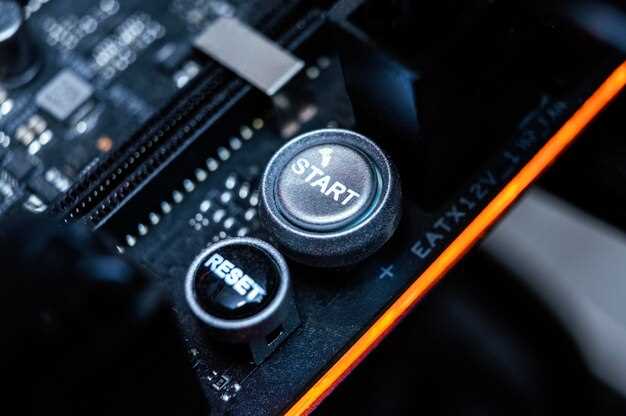
How to upgrade your car’s sound system

Enhancing your car audio system is essential for anyone seeking a superior listening experience on the road. As driving becomes increasingly integrated with our daily lives, the quality of sound produced by factory-installed systems often falls short of expectations. Upgrading your car sound system can make a significant difference, transforming an ordinary commute into an extraordinary journey filled with rich, immersive audio.
An upgraded audio system doesn’t just improve sound clarity; it elevates the overall experience, allowing you to fully appreciate your favorite music, podcasts, or audiobooks. With advancements in technology, modern sound systems offer a variety of options to tailor your audio preferences to your liking. From high-quality speakers to powerful amplifiers and subwoofers, each component plays a crucial role in enhancing your car’s acoustic profile.
Investing time and resources into selecting the right components for your car audio system not only boosts your enjoyment but can also increase the resale value of your vehicle. Whether you’re an audiophile seeking precise sound reproduction or a casual listener who enjoys good tunes while driving, upgrading your car sound system is a worthwhile endeavor that can lead to a more pleasurable experience behind the wheel.
Choosing the Right Speakers for Your Vehicle
Selecting the appropriate speakers for your car sound system is essential for achieving an optimal audio experience. The right speakers can significantly enhance the clarity, depth, and overall quality of sound within your vehicle. Consider the size of your car’s speaker mounts, as this will determine the speaker dimensions you can install. Standard sizes include 6.5-inch, 6×9-inch, and 5.25-inch speakers, and ensuring a proper fit is crucial for installation without any modifications.
Next, pay attention to the speaker type. There are generally two types: coaxial and component speakers. Coaxial speakers combine multiple components into one unit, making them easier to install and ideal for those with limited space. They deliver good sound quality but may lack the finesse of dedicated components. Component speakers, on the other hand, separate the tweeters from the woofers, enabling superior sound reproduction and clarity, particularly at higher frequencies. However, they require more complex installation and space considerations.
Another important aspect to consider is the speaker sensitivity, measured in decibels (dB). Higher sensitivity ratings indicate that the speaker can produce more sound from less power, which is particularly beneficial if you’re using a factory stereo system. If you plan to add an amplifier, look for speakers with lower sensitivity ratings for improved sound dynamics. Additionally, the material of the speaker cones and surrounds affects sound quality; materials such as polypropylene and rubber offer durability and better sound performance.
Also, examine the speaker power handling, indicated by RMS (Root Mean Square) and peak power. RMS signifies how much continuous power the speaker can handle, while peak power indicates the maximum short-burst power. Matching your speaker’s power handling capabilities with your car’s amplifier ensures optimal system performance without distortion or damage.
Lastly, always listen to the speakers before making a purchase. Many retailers allow you to test sound quality across various sound systems. Listen for clarity, detail, and balance in sound across different genres of music. By choosing the right speakers, you can transform your car sound system and create an enjoyable listening experience for every drive.
Installing an Aftermarket Head Unit for Enhanced Functionality

Upgrading your car’s audio system begins with one of the most critical components: the head unit. An aftermarket head unit not only enhances sound quality but also improves functionality, allowing you to enjoy a more personalized audio experience.
One of the primary benefits of installing an aftermarket head unit is the ability to access advanced features. Many factory units lack modern technology such as Bluetooth connectivity, smartphone integration, and touchscreen displays. Aftermarket options often include these features, enabling seamless streaming from your mobile devices, hands-free calling, and even navigation services, turning your car into a tech-savvy environment.
Sound Quality Improvement is another significant advantage. Aftermarket head units typically provide better audio processing capabilities compared to factory-installed systems. This can lead to enhanced clarity, greater dynamic range, and improved bass response, allowing you to enjoy your favorite music as the artist intended.
Installation of an aftermarket head unit is generally straightforward. Most vehicles provide a compatible wiring harness, making the process smoother for DIY enthusiasts. However, it’s essential to ensure that the new unit is compatible with your car’s existing system, including speaker impedance and size constraints.
Additionally, many head units come equipped with customizable equalizer settings, allowing users to fine-tune their audio based on personal preference or specific music genres. This feature can significantly elevate your listening experience, transforming how you perceive sound in your vehicle.
Finally, consider the long-term benefits of having an aftermarket head unit installed. As technology advances, many units offer firmware updates that extend functionality and improve user experience over time. An upgraded audio system does not just meet your current needs; it prepares your car for future enhancements, ensuring that your audio experience remains at the forefront of car technology.
Optimizing Sound Quality with Proper Speaker Placement and Tuning

Achieving superior audio quality in your car hinges significantly on the placement and tuning of your sound system. Proper speaker placement ensures that sound waves disperse evenly throughout the cabin, creating a balanced audio experience for all passengers. To start, it’s essential to position the speakers at ear level, which maximizes clarity and fidelity. Full-range speakers should generally be mounted in the front doors, while tweeters can be positioned near the front pillar or dashboard to enhance high-frequency response.
Tuning your audio system is equally crucial for optimal sound performance. After installation, take the time to adjust settings such as equalization, crossover frequencies, and volume levels. Most car audio systems come equipped with a built-in equalizer that allows you to tailor the audio signature to your personal preference. Experimenting with different settings can vastly improve the soundstage and ensure that low, mid, and high frequencies blend seamlessly.
Additionally, attention to the acoustics of the car interior can further enhance audio quality. Materials like sound-deadening mats can reduce unwanted vibrations and outside noise, allowing your system to reproduce audio with greater accuracy. Also, consider the overall layout of your sound system; avoiding obstructions between speakers and listeners is essential for achieving a clear and immersive sound experience.
Ultimately, optimizing sound quality in your car involves a combination of strategic speaker placement and meticulous tuning. By investing time in these aspects, you can transform your vehicle into a mobile concert hall, enjoying your favorite tracks with professional-grade audio clarity.